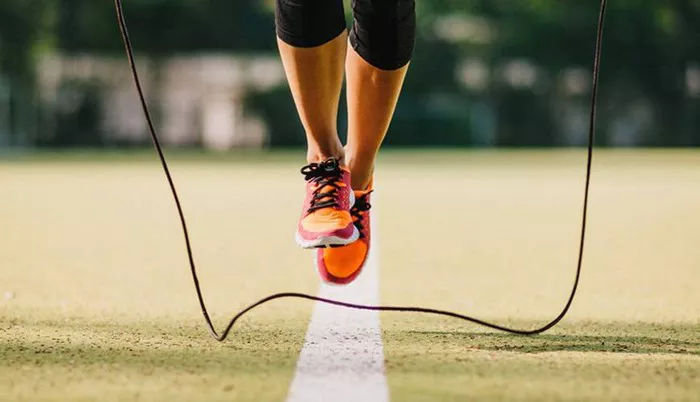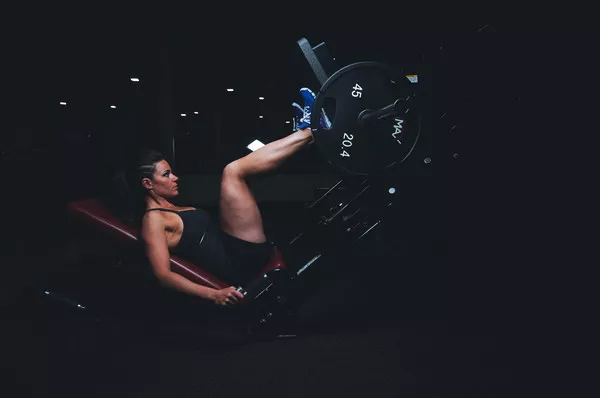Aerobic exercise, also known as cardio, is any form of physical activity that improves the efficiency of the cardiovascular system by increasing heart rate and promoting better blood circulation throughout the body. These exercises are essential for improving overall health, burning calories, enhancing stamina, and promoting heart and lung health. While outdoor running, cycling, and swimming are common forms of aerobic exercise, the gym offers a variety of equipment and spaces that can be used to perform effective cardio workouts in a controlled and motivating environment.
Whether you’re new to the gym or an experienced fitness enthusiast, knowing how to do aerobic exercise in a gym setting can help you achieve your fitness goals more efficiently. Aerobic exercise in the gym can take many forms, ranging from treadmill running and cycling on a stationary bike to rowing and using the elliptical machine. Each piece of equipment has its own benefits, and understanding how to use them effectively can enhance your workout routine, maximize calorie burn, and improve overall cardiovascular fitness.
In this article, we’ll discuss how to do aerobic exercise in the gym, covering different equipment options, workout strategies, and tips to improve your fitness progress. By the end of this guide, you’ll have the knowledge and confidence to incorporate aerobic exercise into your gym routine, whether you’re aiming to lose weight, improve your endurance, or simply maintain good health.
Types of Aerobic Exercise Machines in the Gym
The gym provides a wide range of equipment that can be used for aerobic exercise, each offering distinct benefits. The key to an effective cardio workout is choosing the right machine based on your fitness level, goals, and preferences. Let’s take a closer look at some of the most common aerobic machines available in the gym.
1. Treadmill
The treadmill is one of the most popular pieces of cardio equipment in the gym, and for good reason. It simulates walking, jogging, and running, making it a versatile option for people of all fitness levels. Whether you’re new to exercise or training for a marathon, the treadmill provides an excellent platform for aerobic training.
To make the most of your treadmill workout, you can vary the speed, incline, and duration of your session. Walking at a moderate pace or running at a higher intensity will challenge your cardiovascular system and improve your endurance. To prevent boredom and keep your workouts interesting, try incorporating intervals into your treadmill session, alternating between fast walking or running and slower recovery periods.
2. Stationary Bike
The stationary bike is another great option for aerobic exercise, especially for those who prefer low-impact cardio. Cycling helps improve cardiovascular health, strengthens leg muscles, and burns calories effectively. Most gyms offer upright bikes and recumbent bikes, with the latter providing a more comfortable, reclined seating position.
To maximize the benefits of cycling, adjust the resistance to match your fitness level. For a challenging workout, try increasing the resistance and cycling at a steady pace for 30-45 minutes. Alternatively, you can also do interval training on the stationary bike by alternating between high-intensity sprints and lower-intensity pedaling.
3. Elliptical Trainer
The elliptical trainer is a full-body workout machine that provides low-impact cardio while engaging both the upper and lower body. The machine uses handlebars that move back and forth, allowing you to work your arms in addition to your legs. This makes it an excellent choice for those looking to improve overall cardiovascular fitness and tone muscles at the same time.
When using the elliptical, focus on maintaining a steady pace, and adjust the resistance or incline to increase the intensity of your workout. Like the treadmill and stationary bike, you can also incorporate intervals by increasing the resistance or speed for short bursts followed by recovery periods.
4. Rowing Machine
The rowing machine is an excellent low-impact option that works multiple muscle groups while providing an intense cardiovascular workout. Rowing combines the benefits of aerobic exercise with strength training, as it targets the arms, back, legs, and core.
To use the rowing machine effectively, focus on your technique to avoid strain and maximize the workout’s benefits. Start by sitting tall with your legs slightly bent, grip the handle with both hands, and push through your legs while pulling the handle toward your chest. The movement should be smooth, with a focus on using your legs first, then your arms, and finally your core. Aim for a steady pace and increase your intensity as you become more comfortable with the machine.
5. Stair Climber
The stair climber, or stair mill, is a machine that simulates the action of climbing stairs. It provides a great cardiovascular workout while toning the lower body, especially the glutes, thighs, and calves. The stair climber can be an intense option, so it’s important to start slowly if you’re new to this type of exercise.
Start by adjusting the speed to a manageable pace and focus on maintaining proper posture while using the machine. As you build endurance, you can gradually increase the speed or duration of your workout. The stair climber is also a great tool for interval training, where you alternate between faster, more challenging steps and slower recovery periods.
6. Spin Class
Spin classes are group workouts that typically involve cycling on stationary bikes. Led by an instructor, these high-energy classes offer a full-body workout that focuses on building endurance, strength, and cardiovascular fitness. Spin classes often include interval training, where participants alternate between high-intensity sprints and low-intensity recovery periods.
Spin classes are great for those who enjoy a social, motivating workout environment. The group setting can help push you to work harder, and the upbeat music and energetic atmosphere make it an enjoyable way to improve your aerobic fitness.
Tips for Effective Aerobic Workouts in the Gym
Now that we’ve covered the different types of equipment you can use for aerobic exercise, let’s discuss some essential tips to ensure that your workouts are effective and aligned with your fitness goals.
1. Start Slowly and Build Gradually
If you’re new to aerobic exercise or returning after a break, it’s important to start slowly and gradually build up your intensity. Begin with low-impact exercises like walking on the treadmill or cycling at a moderate pace. Over time, you can increase the intensity, duration, or frequency of your workouts.
For beginners, aim for 20-30 minutes of moderate cardio exercise, 3-4 times per week. As you become more accustomed to the workouts, you can gradually extend the duration or increase the intensity.
2. Incorporate Intervals
To maximize cardiovascular improvements and calorie burn, consider incorporating interval training into your aerobic workouts. Intervals involve alternating between high-intensity bursts and lower-intensity recovery periods. This method has been shown to improve aerobic capacity more effectively than steady-state cardio alone.
For example, on the treadmill, you can alternate between 1 minute of running at a fast pace and 2 minutes of walking at a slower pace. Repeat this cycle for 20-30 minutes. This type of workout increases both the intensity and effectiveness of your session.
3. Monitor Your Heart Rate
To ensure that you’re working at an appropriate intensity, it’s essential to monitor your heart rate during aerobic exercise. Most gym equipment comes with built-in heart rate monitors, or you can use a fitness tracker or smartwatch.
Aim to keep your heart rate within your target heart rate zone, which is typically between 50-85% of your maximum heart rate. This will ensure that you’re working at an intensity that’s challenging but not overly strenuous. To calculate your maximum heart rate, subtract your age from 220.
4. Include Warm-ups and Cool-downs
Warming up before your workout and cooling down afterward is essential for preventing injury and aiding in recovery. A proper warm-up prepares your muscles and cardiovascular system for more intense exercise, while a cool-down helps your heart rate gradually return to normal.
Start each session with 5-10 minutes of low-intensity aerobic exercise, such as walking or cycling at a slow pace, followed by dynamic stretching. After your workout, spend 5-10 minutes cooling down with slower-paced cardio and static stretching to improve flexibility.
5. Stay Consistent
Consistency is key to seeing progress in your aerobic fitness. Aim for regular workouts that challenge your cardiovascular system, and try to stick to a schedule that works for you. Whether you choose to do cardio 3-5 days per week, consistency will help you improve your endurance, stamina, and overall health over time.
6. Listen to Your Body
It’s important to listen to your body during aerobic exercise. If you experience pain, dizziness, or shortness of breath, stop immediately and consult with a healthcare provider if necessary. Make sure you’re staying hydrated and taking rest days when needed to avoid overtraining.
Conclusion
Aerobic exercise is an essential component of any fitness routine, and the gym offers a variety of machines and tools to help you improve your cardiovascular fitness. Whether you prefer running on the treadmill, cycling on a stationary bike, or taking a spin class, there are numerous ways to incorporate aerobic exercise into your gym routine. By focusing on consistency, intensity, and proper recovery, you can effectively improve your aerobic capacity, burn calories, and enhance overall health. With the right approach, your time spent in the gym can lead to significant improvements in your fitness level and well-being.
Related Topics






























